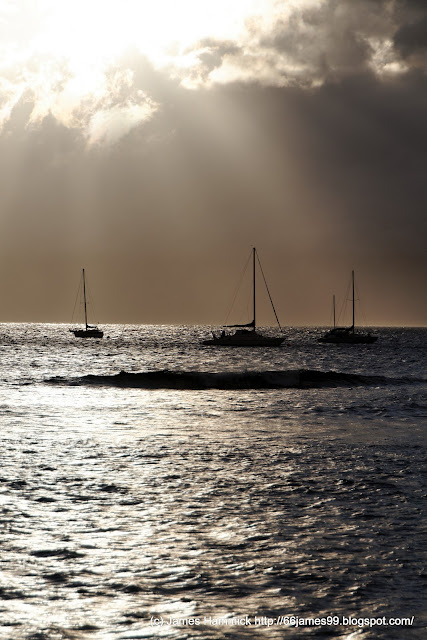The island of Hawaii, being the youngest of the long archipelago to break the surface as the Pacific plate moves past a hot spot is the home to five volcanoes, all still classified as active, the smallest of them has been erupting for the last 26 years. The others also have a real likelihood of future activity, unlike their sister on Maui, which is highly unlikely to produce more lava as it has almost moved past the hotspot powering the production of the island chain in the middle of the Pacific plate....
Beginning by far the largest of the eight Hawaiian islands, twice the size of the other seven combined, a round island tour was always going to be a long day - add return flights from Oahu, and it was a 16+ hour tour from leaving the hotel to returning....
Landing at Kona means I've now collected the full set of the airports in these islands served by the major airlines. Kona airport is an airport of contrasts. It was built in the 1970s as an emergency landing strip for the yet to be finalised Space Shuttle programme - so the runway is one of the highest spec runways in the world, 11,000+ feet in length, and capable of withstanding the heaviest of landings... But the terminal is the most low key set of building, connected by covered walk ways I've seen make up a modern international airport, post 9/11 enhanced security checks have meant they've had to enclose the departure areas, but it was still wonderfully low key for a NASA space port.....
The volcano closest to the resorts has a regular pattern of major eruptions, every 200 years, and it is now 210 years since the last one, so those investments many not look so secure... Having said that these volcanoes are amongst the most closely monitor pieces of geology in the world and there will probably be years of warning if Haualalai starts to wake up, and unlike most volcanoes, the shield type, that occur at this hotspot aren't of the explosive type found on the edge of the pacific plate, some of which have some of the worlds largest cities within there range...

This was my third trip to pay homage to Pele and in particular the active Kilauea, and for the first time I'd been there she actually put on a show, albeit only of hot gases venting from the summit of Kilauea... About the time of my first visit, Kilauea had just switched from erupting from a vent on her slopes that was feeding red hot lava into the Pacific with dramatic effect, to a smaller eruption at a different location – which has been active on and off ever since. This may have been a prelude to the events, a few months later which culminated in an explosion at the summit which opened the vent in the summit caldera. By the time I returned 2 years later, that vent was relatively quiet with only a small volume of gas escaping....
That wasn't the case this time, the volume of gas being thrown into the atmosphere combined with the fickle trade winds had caused the evacuation of the National park on a number of occasion in the previous week because of the dangers the SO2 being vented represent. Luckily for us the was enough wind in a safe direction to allow us to marvel at the power of mother nature...
| Another highlight of the tour was the chance to see close up Green Sea turtles on Punaluu beach, one of the many black sand beaches that occur on the coast of these islands. The sand, formed when hot lava meets the cold sea and explodes is rather more course than the more usual white/yellow sand found elsewhere – formed of small balls of glass resulting from explosions as the lava cools rather than grains of eroded stone/shell… |  |
It was a very long day – but seeing Kilauea active and the turtles on the beach were highlights that made the effort worth it…. Having said that, any future tours I take on this island will focus on the volcano – while interesting the rest of the island is a little uniform – not having had the time to develop the character of the older islands north of it.










































